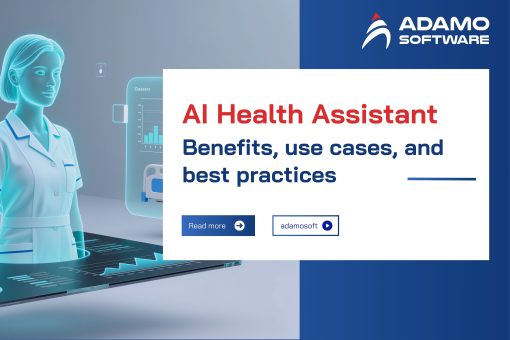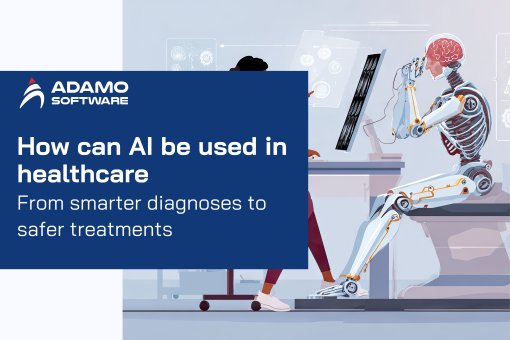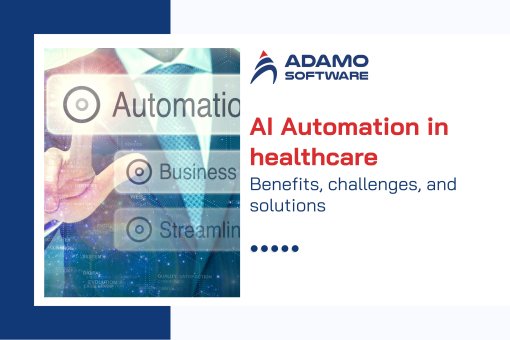15 Must-have Features of Home Healthcare Software
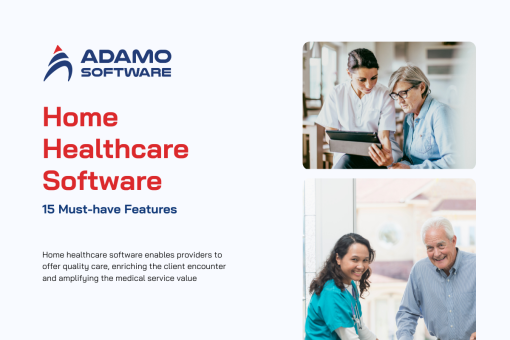
Since the consumption of home healthcare services is likely to continue growing, proper management tools are crucial. The home healthcare organization needs to implement software with the features described above. That’s how they can increase the efficiency of the work, improve the quality of services, and meet legal requirements. Home healthcare software enables providers to offer quality care, enriching the client encounter and amplifying the value of the medical service delivery processes.
Choosing the right home healthcare software can make a huge difference to the quality of provision and the success of home healthcare. At the same time, the preferred solution should offer the required range of features as an integrated package tailored to counter the specific difficulties of in-home care. It means ideal software should enable patients’ scheduling, billing, home healthcare monitoring, and secure data management. This article focuses on the 15 requirements that must be obtained by home healthcare software, to guide you in arriving at an excellent decision. The knowledge of these features will allow healthcare providers to choose the right software solution. Hence, they can enhance service quality and increase the productivity of care delivery.
I. What is Home Healthcare Software
Home healthcare software is a unique computerized application that aims to facilitate healthcare service improvement. This software spans the following functions, which contribute to increasing the quality, speed, and effectiveness of home-based health services.
First, home healthcare software allows treatment facilities to record patients’ data, appointments, clinical notes, and treatment plans electronically. Open and clear transparency of procedures creates more detailed records in patient files. Caregivers can make use of these digitally with easy access.
Moreover, home healthcare software often includes features for billing and invoicing, allowing for seamless financial management. It can also integrate with other health IT systems, such as Electronic Health Records (EHR) and telehealth platforms, facilitating comprehensive and coordinated care.
In summary, home healthcare software is essential for modern healthcare providers. It enables them to deliver high-quality care while optimizing administrative and clinical workflows. By leveraging the capabilities of home healthcare software, providers can ensure better health outcomes, enhance patient satisfaction, and more efficient use of resources.
Additionally, home healthcare software mainly covers bills or invoice features. This enables the convenient accomplishment of financial operations. It can also work hand-in hand with the other technologies currently being used in the health sector, such as the Electronic Health Records (EHR) and telehealth systems, which enable a whole-patient approach.
In conclusion, home healthcare software is a wonderful tool in today’s practiced healthcare sector that can improve the dignity of care at patients’ homes. This way, home healthcare software can accurately indicate the providers to deliver improved health outcomes, increased patient satisfaction, and the more appropriate utilization of healthcare assets.
II. Current Challenges of In-home Care
Like all forms of care, in-home care comes with several challenges that disenable the provision of quality care to patients. Let’s discover these most pressing issues:
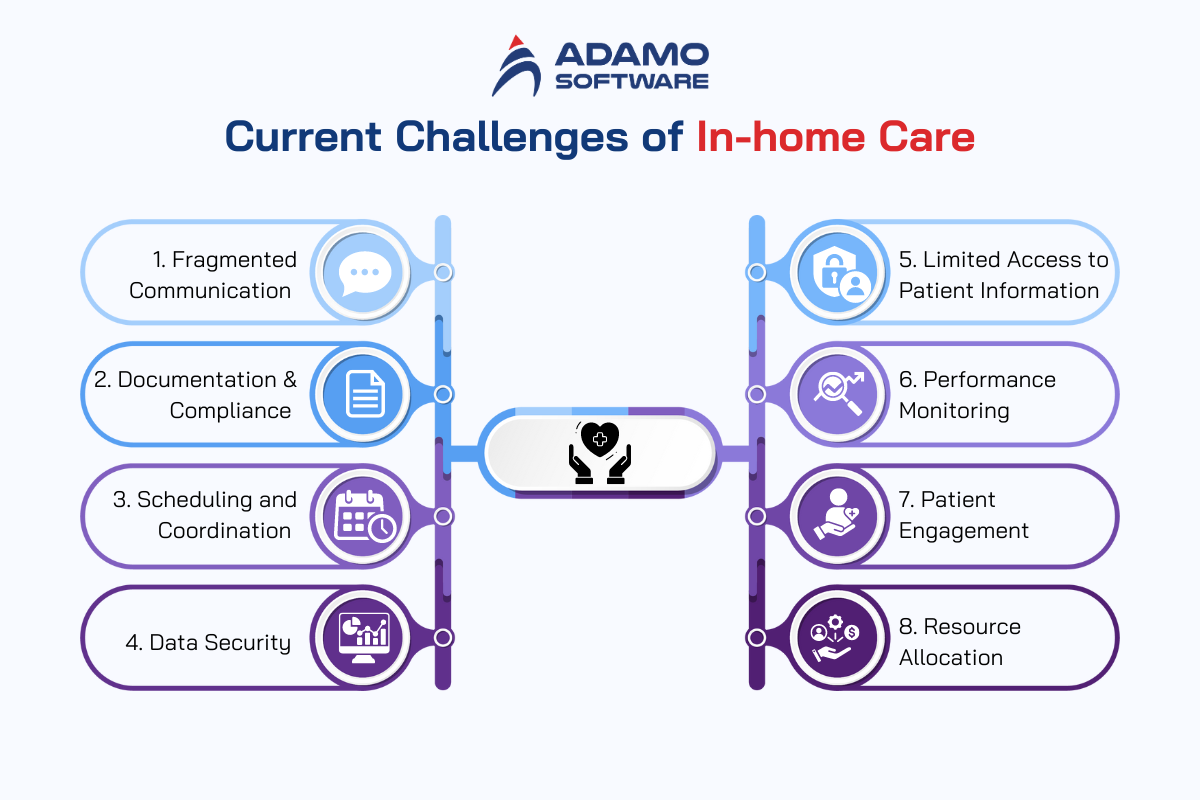
1. Fragmented Communication
Another major issue in in-home care provision is the poor and ineffective communication between the caregivers, the patients, and their physicians. If all these elements are not well coordinated, we will lose major information, or the information will be wrongly interpreted. These will cause a lot of havoc to patients. The email could partly address this gap by using home healthcare software that would have communication and data-sharing capabilities.
2. Documentation and Compliance
HHS is cited for the overwhelming paperwork for the caregivers. Besides facing the administering difficulties of keeping abreast of the regulatory laws, there is a lot of paperwork concerning recording patient information and their treatment plans. This enhances the risk of errors in processing. Such tasks can be well handled by home healthcare software. Processes will be done effectively, and all necessary records will be created with ease and within the required legal specifications.
3. Scheduling and Coordination
It is difficult to synchronize the schedules of caregivers and patients, even more so when it comes to multiple visits and appointments. Regarding scheduling, there is always the possibility of late meetings or cancellations. As for home healthcare, scheduling in software is a possibility and can help present real-time information and organize the timetable properly.
4. Data Security
The confidentiality of information regarding patients should be upheld in healthcare institutions. Alternatively, in-home care providers must ensure that patient information is safe and adheres to the provisions of the HIPAA regulation. Home healthcare software provides high-security characteristics, including encryption and others, for the secure use of the information.
5. Limited Access to Patient Information
Clinicians often report having difficulties obtaining patients’ past clinical histories. These histories are crucial for creating individual approaches to patient care. EHR and other systems are interfaced with home healthcare software. All the caregivers must do is look at the patient’s information right at their fingertips.
6. Performance Monitoring
The tool evaluates caregivers’ performance and assesses the quality of care provided. Home healthcare software contains performance measuring tools that enable healthcare providers to control caregivers’ actions and patients’ conditions.
7. Patient Engagement
Patient participation is critical in promoting health. Patient involvement can affect the results obtained. However, one must be present and communicate continually. This can be challenging when providing care in the patient’s home. The application of home healthcare software practices may include patient communication tools like patient portals and telehealth.
8. Resource Allocation
This indicates that properly controlling resources such as caregivers’ services, medical equipment, and materials is key to offering the right home care. Home healthcare software can manage resources, which means that the correct resources are in the right place at the proper time.
This way, home healthcare software can help the providers mitigate the mentioned challenges, thus increasing the general healthcare quality and patients’ outcomes.
III. Why Healthcare Providers Need Home Healthcare Software
As a consequence, home care remains an area of great concern for various healthcare practitioners. They are confronted with numerous factors affecting its effectiveness. Hence, home healthcare software is now an integral part of most practices due to its importance in discharging tasks almost efficiently. Here are the key reasons why healthcare providers need home healthcare software:

1. Improved Efficiency
Many home healthcare software solutions are focused on making administrative activities easy to complete. These activities include appointments, charging, and record keeping. This is specifically right since the processes have been automated. Automation eliminates time spent on paperwork and allows more time to attend to the patients.
2. Enhanced Communication
The care coordination of the caregivers, patients, and other stakeholders makes this kind of communication essential. Thus, home healthcare software is advantageous. It provides greater real-time communication and coordination between home health staff, therapists, physicians, and patients.
3. Accurate Documentation
Documentation can be useful in handling patients’ issues and meeting their rights. This is particularly important within health facilities since they are availed with early detection services. The use of solutions in home healthcare helps practitioners capture and maintain patients’ details, care plans, and clinical documentation. This minimizes the probability of generating or accumulating errors that are legal violations of health quality standards.
4. Patient-Centered Care
The interoperability of home healthcare software with EHRs, among other systems, means that caregivers can always have a great view of patient histories. This allows the providers to assist every patient as a special individual with their own health requirements and medical history.
5. Resource Management
Most importantly, in-home care providers need to properly allocate human, material, and financial capital to develop reliability in care delivery. Home healthcare software assists the organization in effectively maximizing the resource.
6. Performance Tracking
It is equally important to assess the caregiver’s activities and the standard of care offered sometimes. This kind of software provides tools for monitoring the activities of caregivers, patients’ status, and organizational efficiency. It also helps in recognizing main tendencies and maintaining high-quality levels among home care service providers.
7. Data Security
The security of patients’ information is a very important factor in the health sector. Home healthcare applications are integrated with security features such as data encryption and access controls. These features ensure data security by adhering to legal requirements like HIPAA.
8. Patient Engagement
This paper focuses on how a patient is involved in his or her care to get the best results in terms of health. Patients are involved in home healthcare through services such as patient portals and telehealth services. These services are incorporated into the home healthcare software.
9. Cost-Effectiveness
As a result, the effectiveness and accuracy of home healthcare software allows providers to minimize business costs. This frees the providers to devote more money, time, and effort to patients, and other important aspects.
Altogether, home healthcare software plays the role of a necessity for healthcare providers who are willing to improve the situation in home-based treatment delivery. By exploring the functionality of home healthcare software, providers will learn how to address various issues, enhance the results, and provide the best experience to patients.
IV. Different Types of Home Healthcare Software
Home care software can be available in electronic forms that are packaged differently depending on the segment of home care it addresses. Understanding the significant differences in home healthcare software can assist the healthcare provider in arriving at the proper decision. Here are the main types of home healthcare software:
1. Electronic Health Records (EHR) Systems
The central role of Electronic Health Record (EHR) systems is to store patients’ health information records electronically. These systems allow the caregivers to have current information on the patient, through which they administer correct care. An example of home healthcare software is iEHR, in which a patient’s history, the entire course of treatment, reports of a doctor, and other notes can be transferred to the application.
2. Scheduling and Appointment Management Software
This kind of software enables the efficient scheduling of caregivers and patients’ appointment times. It helps with the appropriate scheduling of visits so that no client must wait for a long time. This eliminates the chances of the clients failing to get the services they need at the right time. A software package for home healthcare that containsmakes it possible to set up reminders and update schedules in real-time.
3. Billing and Invoicing Software
Telephone answering, billing, and invoicing software help to manage the financial part of the home healthcare business. It implements the billing process, handles and processes insurance claims, and tracks payment status. This propels proper financial processes. Home care software with the billing feature is also useful in cutting the time agencies spend on administrative work. It improves the collection of payments.
4. Care Management Software
Care management software is among those that follow and help manage a patient’s care plan. The tool assists caregivers in monitoring the patient’s progress. It helps in evaluating the effectiveness of the administered treatment and establishing adherence to the established care regime. Electronic portable software can improve the quality of care by offering devices for tracking and recording.
5. Telehealth and Telemedicine Software
Telehealth software can also be used to consult through phone and video calls or even virtual visits. This ensures that care can be provided without having to conduct a physical examination of the client. It is used to call the patient to get updates or to measure the response rate from a distant area. This type of home healthcare software is effective. It includes features such as video/voice calls, secured messaging, and remote control and monitor options.
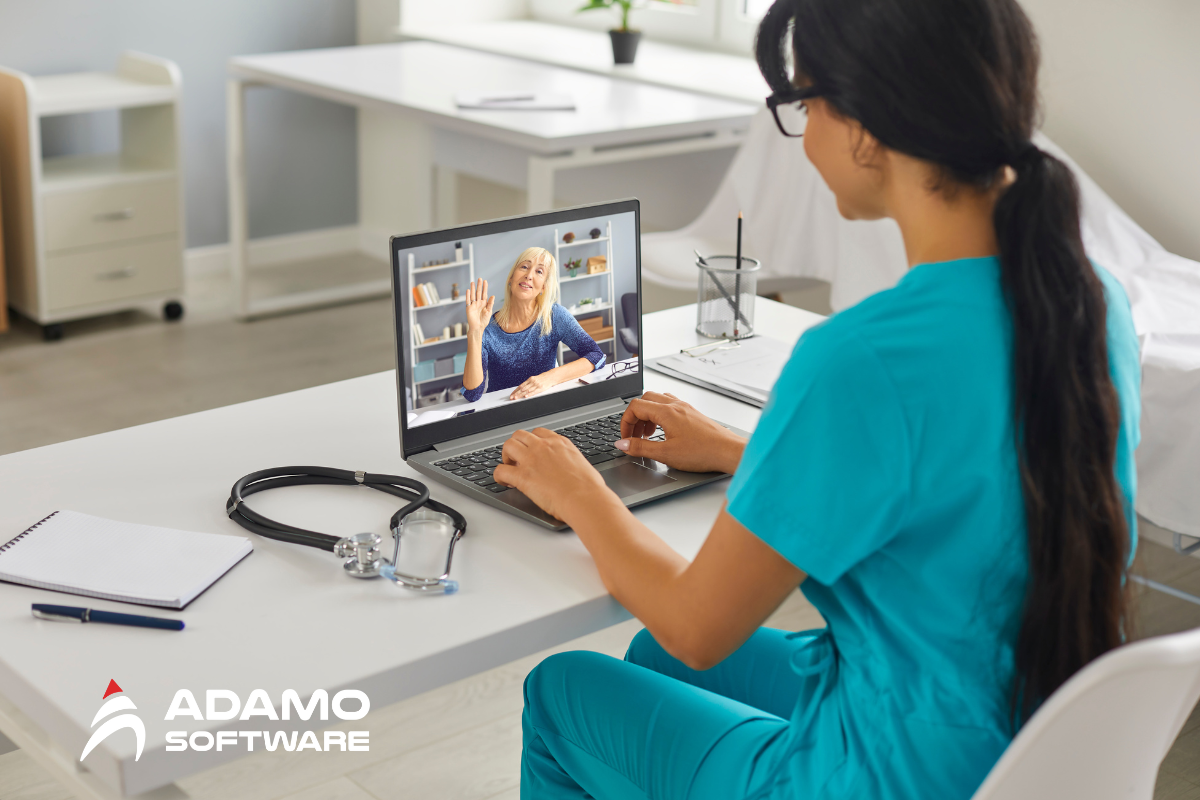
6. Mobile Health (mHealth) Apps
Most mHealth applications are for use on mobile devices thus enabling caregivers and patients’ quick access to healthcare tools. The possibilities of using such applications can be confirmed by functions like health continuum, appointment scheduling, and interacting with a caregiver. The expansions and mobile features of home healthcare software guarantee that the care stays doable.
7. Clinical Decision Support Systems (CDSS)
CDS is the computerized version of a decision support system. It provides information in the form of guides or suggestions for clinical treatment and alerts. It aids in the diagnosis, deciding on therapies, and the prevention of possible mistakes. Automated generation of CDSS for home healthcare software helps increase the reliability of the generated scripts.
8. Patient Portals
Patient portals are patient-centered web applications. Through these portals, patients can access their health records, communicate with caregivers, and manage their scheduled appointments. Implementing a patient portal in home healthcare software is significantly important. This enhances patients’ participation in healthcare processes.
9. Medication Management Software
Medication management software assists in the organization and keeping track of a patient’s medication list. This ensures the correct prescriptions are filled out and taken at the proper times. They can remind the patient and caretakers which would aid in minimizing the likelihood of medical mistreatment. There is nothing more helpful to patients with complicated dosing schedules than health software with medication management capabilities.
10. Remote Patient Monitoring (RPM) Systems
RPM systems utilize gadgets to monitor some of the patient’s significant health indicators, such as blood pressure, glucose level, pulse rate, and others, without physically touching them. This information is provided to the caregivers in real time for timely intervention and prevention. Homecare software with RPM the efficacy of the identification and tracking of chronic conditions.
Altogether, it can be concluded that by presenting a variety of home healthcare software types, there is a solution for different topics within in-home care. Through an intelligent selection of the forms mentioned above, it is possible to achieve maximum workflow. This increases the overall effectiveness of healthcare and improves patients’ lives by providing the required medical care at home.
You can explore more about “Outsourcing Healthcare Software Development: When it works” here.
V. 15 Key Features of Home Healthcare Software
Thus, home healthcare software must contain several functions to meet the requirements of the patients, caregivers, and managers. Here are 15 key features that are essential for robust home healthcare software:
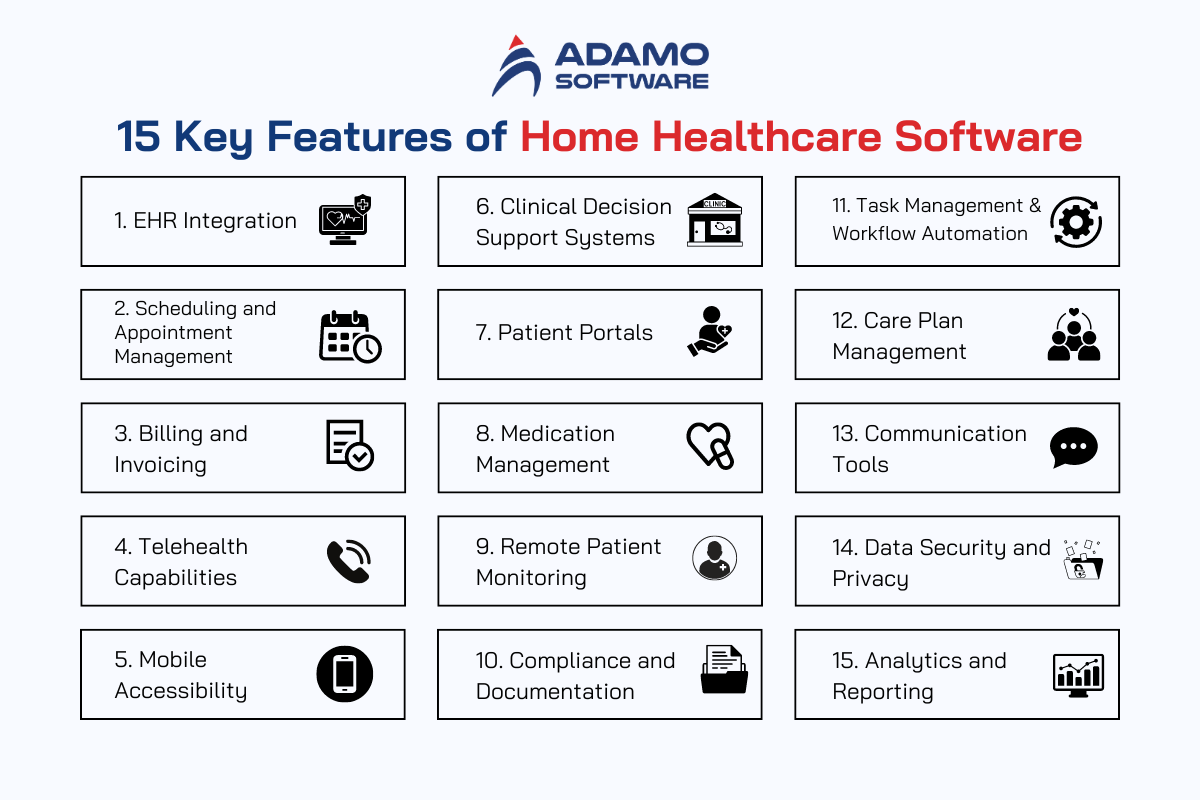
1. Electronic Health Records (EHR) Integration: As a complementary data model connected to an EHR system, practitioners get continuous access to patient’s medical records. They also have access to management plans and clinical documents.
2. Scheduling and Appointment Management: Providing resources for maintaining a proper schedule of appointments with patients and coordinating the delivery of on-schedule services.
3. Billing and Invoicing: Billing functions can be automated. Insurance claims can be managed along with tracking payments. This will help to improve the financial process and decrease the hassles involved.
4. Telehealth Capabilities: Ordinary telemedicine and video consultations permit individuals to reach healthcare providers and conduct virtual visits while keeping social distance.
5. Mobile Accessibility: Software applications for both caregivers and patients. This allows the software to be used on smartphones and tablets while on the move.
6. Clinical Decision Support Systems (CDSS): Proper clinical suggestions and alarms facilitate the caregiver in clinical decision-making. Since they contain evidence-based suggestions and alarms.
7. Patient Portals: Offering secure and password-protected web-based environments that enable the patient to view health records, communicate with caretakers, or book an appointment.
8. Medication Management: Maintaining records and schedules of monitoring, distribution, and prescription of all patients’ medications. General timely reminders, especially regarding the times when patients are supposed to take their medications.
9. Remote Patient Monitoring (RPM): Employing gadgets to capture vital signs and other parameters of the patient to attend to them timely.
10. Compliance and Documentation: Meeting the legal paperwork concerning patient care to the recommended standards and practices. This improves the quality of the care offered to patients.
11. Task Management and Workflow Automation: Optimizing day-to-day processes and eliminating as many routine tasks as possible. This contributes to increasing the time spent on primary work and enhancing service quality.
12. Care Plan Management: Assisting in creating, inventorying, and revising individual patient care plans. This enables us to provide each patient with proper and distinctive care.
13. Communication Tools: Coordinating information sharing and updates among caregivers, patients, and other stakeholders within a given time frame.
14. Data Security and Privacy: Implementing encryption and security for patients’ information and observing laws like the HIPAA Act.
15. Analytics and Reporting: Creating systems and applications that include functionality for assisting the analysis of patient data and performance reporting to aid in improving healthcare outcomes.
These aspects mean that to satisfy the multiple needs of the home healthcare sector, home healthcare software possesses the following features. Thus, by including these functionalities, home healthcare software can enhance the aspects of care that home healthcare patients receive.
These specified attributes help in providing efficient and standard care and controlling the resources and healthcare standards. The right home healthcare software will revolutionize the way home healthcare is delivered and impact stakeholders positively.
VI. What to Consider Before Choosing Home Healthcare Software
To select the best home healthcare software, it is critical to identify the right solution. This solution should help to improve the effectiveness of the care-providing system or other existing flows of a home healthcare organization. These factors need to be carefully considered before your decision:

1. User-Friendly Interface
Make sure that home healthcare software has a basic and appealing graphical user interface. In this regard, the software can be easily introduced to caregivers and administrators without extensive training.
2. Integration Capabilities
The software should be compatible with other systems, including the EHR, billing, and telemedicine services. This helps with proper information management, especially as it flows across the different platforms, and hence boosts efficiency.
3. Customization Options
It will be beneficial to work with home healthcare software that has options for basic modifications. These modifications can suit the requirements of your home healthcare facility. This includes the capability to configure the flows, forms, and reports according to the care protocols or other business procedures existing in the organization.
4. Scalability
Select software that can grow from the organization’s current size to the next level and subsequent ones. The latter also means that the home healthcare software should demonstrate its capacity for development. It should also be able to add more features as your services offered or the number of patients actively serviced grows.
5. Data Security and Compliance
Specify that the software is legal to practice and efficient in meeting industry standards and ordinances such as HIPAA. It could be viable and reasonable to suggest that data encryption, proper access rights, and system logging are the most reliable measures to ensure the patient’s data protection.
6. Customer Support and Training
Review the kind of support and training that the software vendor is willing to provide. The concept of B2B customer support may include timely solutions to challenges, while satisfactory training enables the human resources to have adequate knowledge on the usage of the software.
7. Cost and ROI
The initial cost of the home healthcare software and implementation, and other charges that may be associated with the software. Measure the effectiveness of the investment by reviewing how the software can optimize the process, decrease mistakes, and benefit patients.
8. Feature Set
Understand the various features provided by the software that will benefit the organization. Some useful things to consider are the ability to schedule, billing, documentation, means of communication, and reporting. It should also be browser-based for caregivers to check on the tasks via their mobile devices.
9. Performance and Reliability
Simple, reliable, and efficient software should be preferred to avoid disappointments during its usage. Also, verify any incidents that might have affected the functionality of the firm’s systems by increasing downtime.
10. User Feedback and Reviews
Research the feedback given by users of the home healthcare software. Since the software will be used in the real world, it would be important to know what other healthcare providers have experienced regarding positives and negatives.
When addressing these aspects, choose home healthcare software that fits your organization’s requirements and improves care quality while remaining compliant with the necessary regulations. The right home healthcare software will help to optimize your business processes. It will also enhance patients’ experiences and health.
VII. How Adamo Helps You Develop Custom Home Healthcare Software
Adamo’s focus is on home healthcare software development. The company develops custom software products for healthcare providers. It is a fully integrated development process. This guarantees that your software will meet your functional needs and help make your healthcare services better. Here’s how Adamo helps you develop custom home healthcare software:

1. Needs Assessment and Consultation
The first step in our process is an initial assessment of the situation and identification of the goals and difficulties. Together with your team, we discuss the main requirements, the features you want to see, and the opportunities for improvement. This initial step therefore ensures that the custom home healthcare software is developed with an understanding of the operation of your setup.
2. Customized Design and Development
At Adamo, we always ensure to develop interfaces that are easy to use by the end users, the caregivers, and the administrators. Our professional developers and designers design home healthcare software that fits your current systems and processes. This makes it possible to develop software that is efficient and easy to use, depending on the user’s needs.
3. Integration with Existing Systems
We understand the need for seamless interoperability with your existing healthcare ecosystem. Our home healthcare software is fully customizable one integrated with Electronic Health Records (EHR), billing, and other necessary platforms. This integration ensures that your organization functions smoothly and effectively.
4. Security and Compliance
The privacy of patient information is crucial. In security, Adamo’s home healthcare software is designed with advanced security features such as data encryption and access control, and it complies with legal requirements such as HIPAA. We make sure that your software not only safely stores data but also complies with all the requirements.
5. Scalability and Flexibility
All our solutions can be adapted to enable the continuous evolution of your business. If you require new functionalities and additional services, and to supply more consumers, our customized home healthcare application is versatile. This adaptability ensures that your software will serve you well as your firm changes.
6. User Training and Support
Consequently, Adamo gives sufficient training so that your staff should be ready to handle the new software. We also provide open follow-ups to address any problems or questions that may arise for the long-term, effective use of the software.
7. Performance Optimization
This is a major area of emphasis because if the software does not work as intended under different circumstances, it will be of little use to clients. Adamo’s also deals with home healthcare software specific to healthcare, which is rapid and does not halt your business.
8. Feedback and Continuous Improvement
At Adamo, please remember we always welcome your feedback and work towards improvement. The outcome is that we receive feedback to define and improve the software to fit your new and continuing requirements.
Thus, with Adamo as your home healthcare software technology partner, you can provide custom solutions for better care delivery, optimized processes, and improved patient outcomes. As a result of ReadSoft’s experience and professionalism, your software has become a resource that will help your organization deliver superior home healthcare services.
The systematic strategy used by Adamo in designing a home healthcare software solution for your agency guarantees that you get what you want. Adamo has stressed elements like usability, integration, security, and sustainability. Therefore, we are your ideal solution provider for improving home healthcare through effective software technologies.







